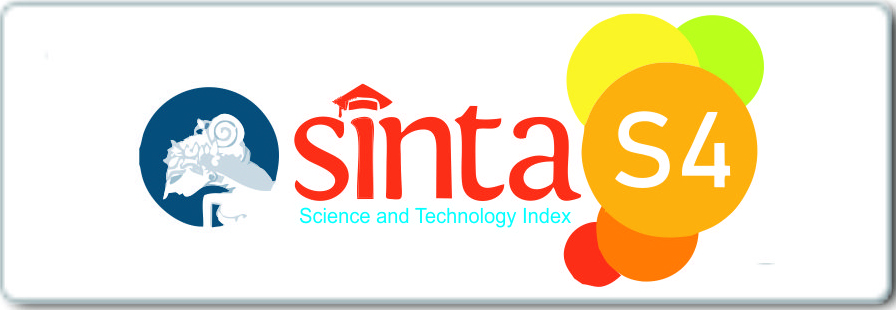Pengaruh Pemberian Air Cucian Beras terhadap Pertumbuhan Tanaman Tomat (Solanum licopersicum)
DOI:
https://doi.org/10.32529/jbb.v1i1.1646Abstract
: Factors which influence growht of plants consist of two parts, they are internal factors and external factors. One of the external factors that affect plants growth is nutrients. rice washing waste contains many nutrients needed by plants, but not many people use it. The purpose of this study is to determine the effect of rice washing waste on the growth of tomato (Solanum licopercum.) This research is experimental design. There were independent variable and dependent variable. Rice washing waste was independent variable and growth of tomato plants (Solanum licopersicum) was dependent variable. The research design used a randomized block design (RBD) model with 3 treatments and 3 replications. Data collection techniques using observation and documentation. The data analysis technique used the ANOVA test. The result of this research shows that the implementation of rice washing waste did not signficantly influence the growth of tomato plants (Solanum licopersicum) with significance value > 0.05. Key words: rice washing waste, growth, tomatoReferences
Bahar, A. E.(2016). Pengaruh Pemberian Limbah Air Cucian Beras Terhadap Pertumbuhan Tanaman Kangkung Darat (Ipomoea reptans Poir). Riau: Universitas Pasir Pengaraian.
Hartati, S. (2010). Tanaman Tomat Hasil Mutilasi Buatan Paska Kondisi Stres Air dan Kondisi Optimal. Agrosains, 2(2), 35-42.
Istiqomah, N. (2012). Efektifitas Pemberian Air Cucian Beras Coklat Terhadap Produktivitas Tanaman Kacang Hijau (Phaseolus radiatus L.) pada Lahan Rawa Lebak. Ilmiah, 33(1), 100.
Karlina, A., Yursida., & Ruli J. P. (2013). Tanggap Pertumbuhan Kangkung (Ipomea reptans) terhadap Aplikasi Pupuk Organik Cair Urin Sapi dan Pupuk Organik Di Lahan Pasang Surut Tipe Luapan C. Ilmiah AgrIBA, (1), 1158- 2303.
Lutfianis, U., Budiastuti, S., & Sumarno. (2012). Potential Production of Red Rice By Arrangement Density of Plant Population and Fertilizing on Dry Land. Agronomy Research, 1 (2).
Novizan. (2012). Petunjuk Penggunaan Pupuk Yang Efektif. Jakarta: Agromodis.
Riskiyah, J. (2013). Uji Volume Air pada Berbagai Varietas Tanaman Tomat (Lycopersicum esculentum Mill). Riau: Agroteknologi Fakultas Pertanian Universitas Riau.
Simanungkalit. (2006). Pupuk Organik dan Pupuk Hayati. Bogor: Balai Besar Penelitian dan Pengembangan
Sitinjak, R. R., Purba, M. P., & Nababan, B. D. (2018). Pengaruh Pemberian Air Cucian Beras dan Air Kelapa Terhadap Pertumbuhan Bibit Kelapa Sawit (Elaeis Guineensis Jacq.) di Pre Nursery. Agroprimatech, 2(1), 16-24.
Sutanto. R. (2002). Pertanian Organik: Menuju Pertanian Alternatif dan Berkelanjutan. Yogyakarta: Kanisius.
Wati, M., Damhuri, & Safilu. (2017). Pengaruh Pemberian Air Beras Terhadap Pertumbuhan dan Produktivitas Tanaman Tomat (Solanum lycoersicum L.). Ampibi, 2(1), 49-56.
Wulandari C., Muhartini S., & Trisnowati S. (2011). Pengaruh Air Cucian Beras Putih dan Beras Merah terhadap Pertumbuhan dan Hasil Selada (Lactuca sativa L.). Agrovigor, 1(1), 2-3.
Zakaria. (2013). Pemanfaatan Kulit Telur dan Air Cucian Beras dengan Penambahan CMA pada Media Tanaman untuk Pertumbuhan Tanaman Tomat (Solanum lycopersicum). Surakarta: Fakultas Keguruan dan Ilmu Pendidikan Universitas Muhammadiyah Surakarta.
Downloads
Published
How to Cite
Issue
Section
License
Copyright (c) 2022 Jurnal Biologi Babasal

This work is licensed under a Creative Commons Attribution-NonCommercial 4.0 International License.
Authors are able to enter into separate, additional contractual arrangements for the non-exclusive distribution of the journal's published version of the work (e.g., post it to an institutional repository or publish it in a book), with an acknowledgement of its initial publication in this journal.
Authors are permitted and encouraged to post their work online (e.g., in institutional repositories or on their website) prior to and during the submission process, as it can lead to productive exchanges, as well as earlier and greater citation of published work














